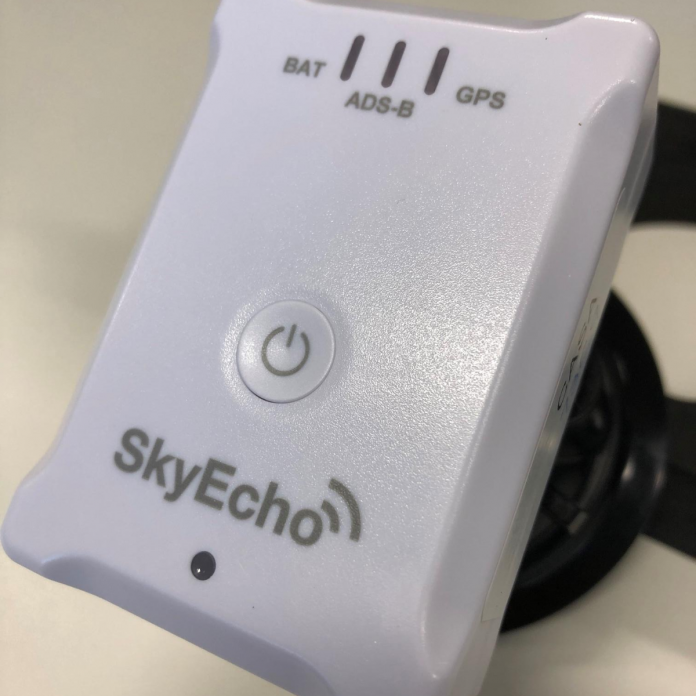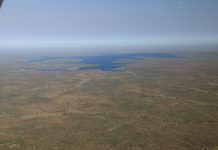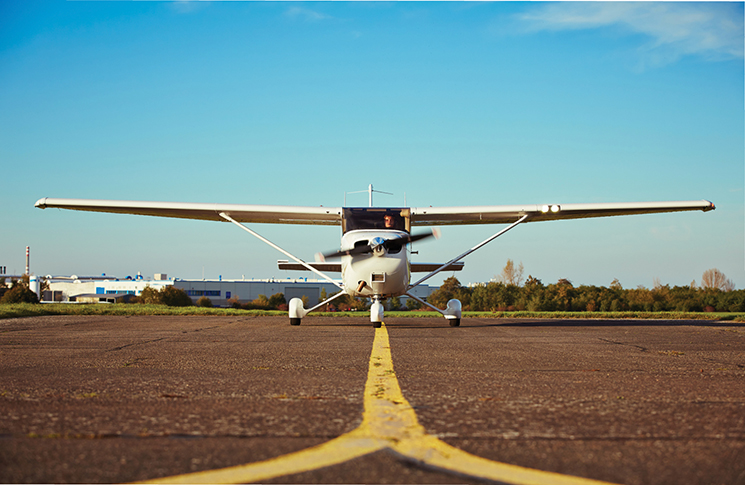See. Be Seen. Avoid. It’s a simple principle that CASA is encouraging all visual flight rules (VFR) pilots should adopt.
To assist in being ‘seen’, there is now an easy and relatively cheaper option using automatic dependent surveillance broadcast (ADS-B) technology.
While all instrument flight rules (IFR) aircraft must be fitted with ADS-B—which automatically broadcasts the precise location and altitude of aircraft—voluntary uptake in the VFR community has been historically quite low. But CASA believes the new options will change this.
Following industry consultations, CASA implemented a range of equipment and installation standards for ADS-B fitment in VFR aircraft. These standards include portable self-contained ADS-B electronic conspicuity (EC) devices—able to transmit aircraft position information and receive position information from other aircraft
‘For an EC device to be useable in Australia, we require the manufacturer to give us a statement of capability and conformance,’ Jan Goosen, senior standards officer, Air Traffic Management Systems, says.
‘EC devices with a valid statement are listed on the CASA website and these may be used in Australian airspace (in accordance with specified operating requirements and limits). The aeronautical information publication (AIP) summarises these operating requirements and limits.
‘At this stage the uAvionix SkyEcho 2 ADS-B transceiver has been accepted by us as meeting the technical standards for an EC device.’
Jan hopes more companies produce these low-cost ADS-B devices in the future.
‘The new technology is about enhancing flying safety, particularly in non-controlled airspace. We’re not addressing a safety shortfall but expanding on the range of safety options available to pilots.’
The new standards also allow some uncertified, but technical capable, ADS-B avionics to be used in light sport aircraft, experimental aircraft and a range of other light aircraft and balloons. Specific details are available on the CASA website.
Further information:
Find out more about the ADS-B consultation feedback.
Read general information about aircraft surveillance.






I’m confused. The UAvionix unit, as the article’s example, is a compliant ADS-B out unit and has been adopted widely on GA aircraft in the United States.
UAvionix transmits on any one frequency so it is not acceptable in Canada or Mexico, or other international jurisdictions, but if the frequency is acceptable in Australia then it is an excellent ADS-B out solution. However, this explanation suggests that Australia is creating a special category yet mentions one excellent fully compliant ADS-B out system.
uAvionix Corporation produces several types of ADS-B OUT equipment, including the SkyEcho 2 electronic conspicuity (EC) device. Unlike some products from uAvionix Corporation, the SkyEcho 2 is not compliant with FAA ADS-B 2020 standards. Therefore, the SkyEcho 2 cannot be used in transmit mode for flights in any part of the US National Airspace System (NAS) where aircraft are required to have ADS-B OUT equipment.
The SkyEcho 2 belongs to a special category of EC equipment – accepted in Australia (and the United Kingdom) for use in VFR aircraft, specifically to enhance pilot situational awareness.
Compliant EC devices, like the SkyEcho 2, transmit on the 1090MHz (1090ES). This is the standard ADS-B frequency for most parts of the world.
The USA also allows ADS-B on 978MHz (Universal Access Transceiver – UAT), but only for operations below 18,000ft. The SkyEcho 2 can receive ADS-B messages on UAT; but is not capable of transmitting position information via UAT. In Australia, UAT is not used for ADS-B OUT services.
It’s important to note: an EC device – like the SkyEcho 2 – cannot be used instead of transponder within in Australian airspace where a transponder is required
Jan Goosen
Hi Jan
Could I ask for some clarification on this statement by you, “It’s important to note: an EC device – like the SkyEcho 2 – cannot be used instead of transponder within in Australian airspace where a transponder is required”
What does this mean? It does after all claim to be adsb OUT.. if its just situational awareness that we seek and I cant use this as a transponder in class C – then an ilevil BOM (with ADSB IN and many other safety features like AoA meter) – would probably present a better safety improvement to my VFR flying – but I cannot get subsidised for the ilevil BOM – only the Skyecho (in this comparison)
Hi Matthew, just wondering, what prevents the iLevel from being used as ADSB in/out if you are using its WAAS GPS to input to your mode S Txponder.
I do not understand – I believed that ADS-B was to be mandatory in all aircraft in 2020?
If not then why not?
In addition and more importantly there must be hefty fines for the cowboy pilots out there who turn them off when they think they do wont be “seen”. This is commonplace on the mid north coast of nsw and requires urgent addressing.
Hi Ian, ADS-B became mandatory in US airspace in January 2020. In Australia, ADS-B is only mandatory for aircraft flying under the instrument flight rules (IFR). The Australian mandate came into effect in 2017.
In Australia, ADS-B is not mandated aircraft operating under the visual flight rules (VFR). Pilots flying under the VFR should be using the see and avoid principle in all situations. What has changed is that pilots of VFR aircraft are able to now able to take advantage of ADS-B technology, for example using Electronic Conspicuity (EC) equipment to assist with or enhance situational awareness.
3. Good technology but not faultless and not fully reliable (RAIM). I also noticed SkyEcho2 transmitting only when airborne, sometimes at 500ft, sometimes at 1000ft, sometimes other close by aircrafts disappeared from the screen when in the air. It is ok to have it, but definitely not bullet proof technology. It is better when pilots expect other aircrafts flying without adsb (or maybe faulty), otherwise may get too complacent watching screens.. VFR is still Visual flying…
Hi Ian, ADS-B became mandatory in US airspace in January 2020. In Australia, ADS-B is only mandatory for aircraft flying under the instrument flight rules (IFR). The Australian mandate came into effect in 2017.
In Australia, ADS-B is not mandated aircraft operating under the visual flight rules (VFR). Pilots flying under the VFR should be using the see and avoid principle in all situations. What has changed is that pilots of VFR aircraft are able to now able to take advantage of ADS-B technology, for example using Electronic Conspicuity (EC) equipment to assist with or enhance situational awareness.
3. Good technology but not faultless and not fully reliable (RAIM). I also noticed SkyEcho2 transmitting only when airborne, sometimes at 500ft, sometimes at 1000ft, sometimes other close by aircrafts disappeared from the screen when in the air. It is ok to have it, but definitely not bullet proof technology. It is better when pilots expect other aircrafts flying without adsb (or maybe faulty), otherwise may get too complacent watching screens.. VFR is still Visual flying…
Jan Goosen
Good technology but not faultless and not fully reliable (RAIM). I also noticed SkyEcho2 transmitting only when airborne, sometimes at 500ft, sometimes at 1000ft, sometimes other close by aircrafts disappeared from the screen when in the air. It is ok to have it, but definitely not bullet proof technology. It is better when pilots expect other aircrafts flying without adsb (or maybe faulty), otherwise may get too complacent watching screens.. VFR is still Visual flying…
You are absolutely correct – a pilot’s visual scan outside the aircraft remains the most important way to see and avoid other aircraft. Electronic conspicuity (EC) equipment only assists in this primary activity.
EC equipment, particularly portable equipment carried inside an aircraft, is low power (±20W) and can be affected by airframe shielding. This means its transmit and detection ranges can be reduced. Also, the numbers of VFR aircraft transmitting ADS-B position are (presently) very low. Therefore, there is no certainty of detecting conflicting traffic on ADS-B receiving equipment. Or put another way, an absence of traffic on the ADS-B display does not mean an absence of traffic.
There is also the risk of a pilot becoming fixated or distracted by ADS-B information.
CASA Advisory Circular 91-23 (ADS-B for enhancing situational awareness) has guidance on these matters. https://www.casa.gov.au/rules-and-regulations/current-rules/advisory-circulars
Jan Goosen
[…] can also now use a low-cost ADS-B unit to help you be more visible to other aircraft in the area that are equipped with ADS-B […]